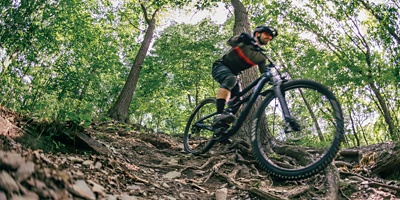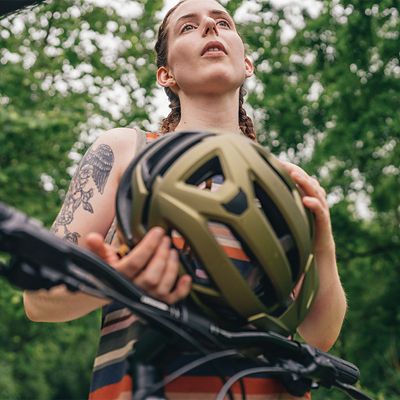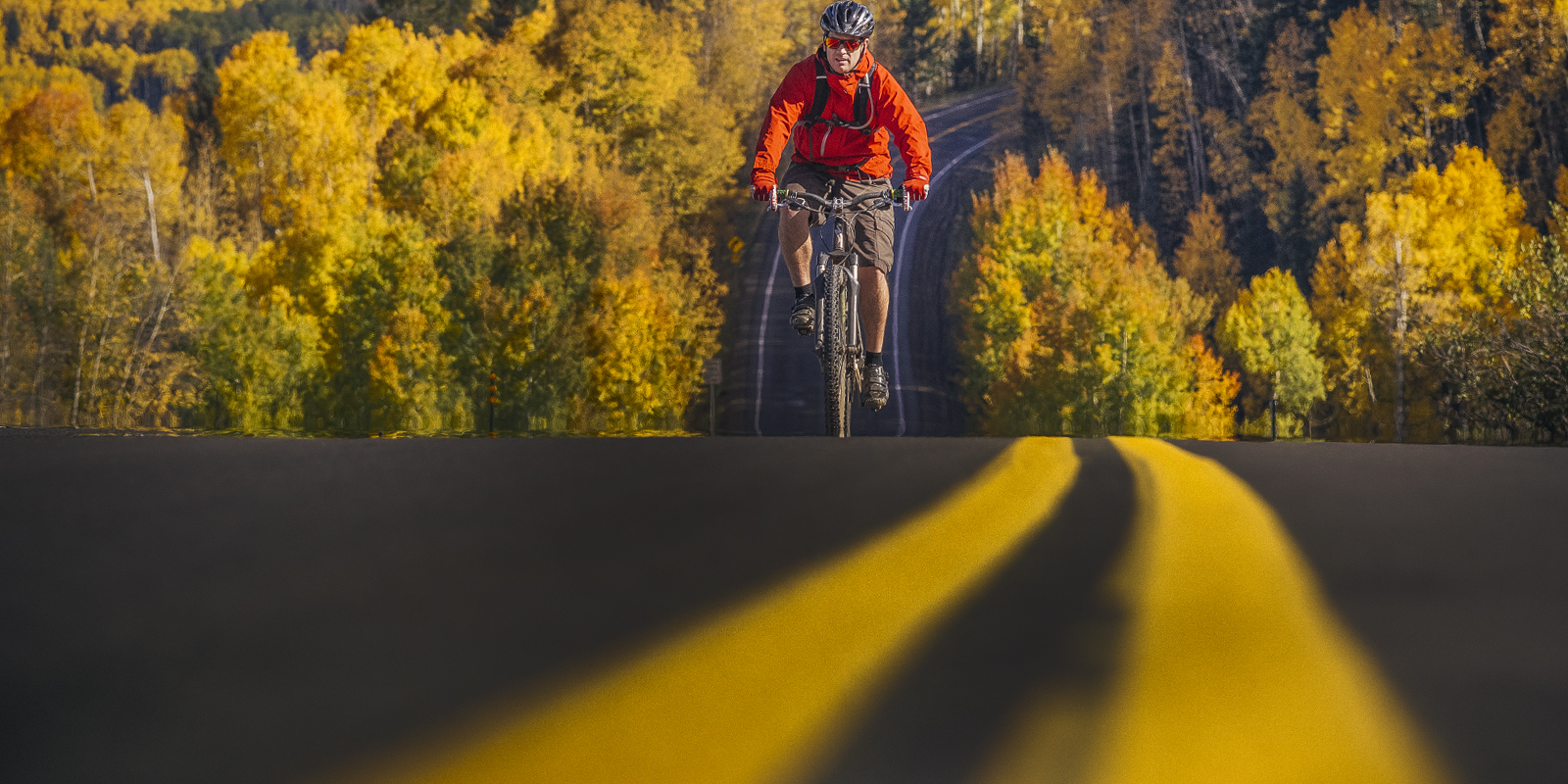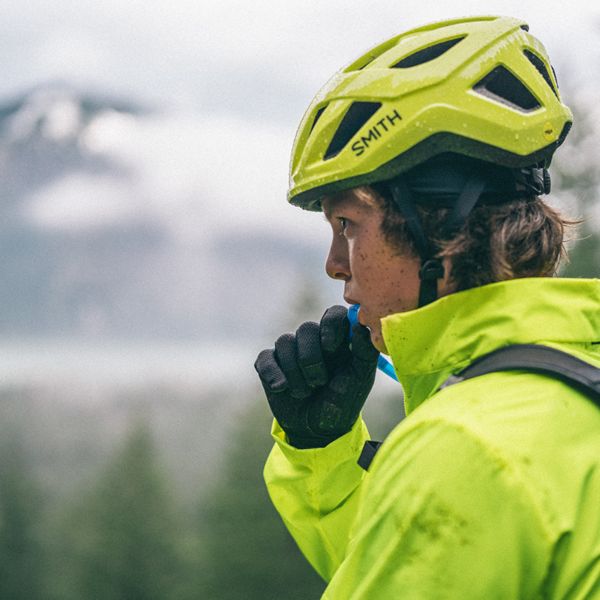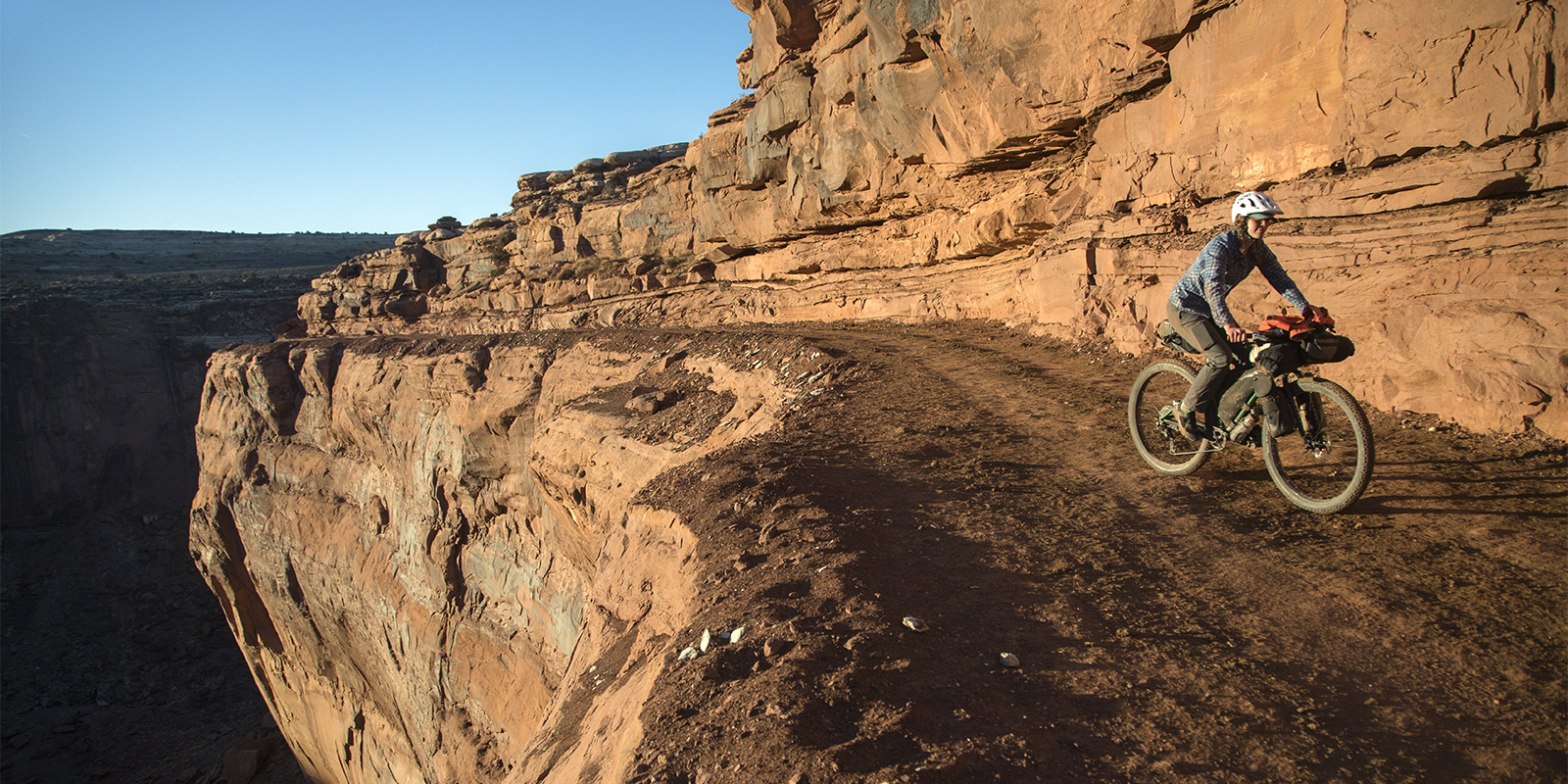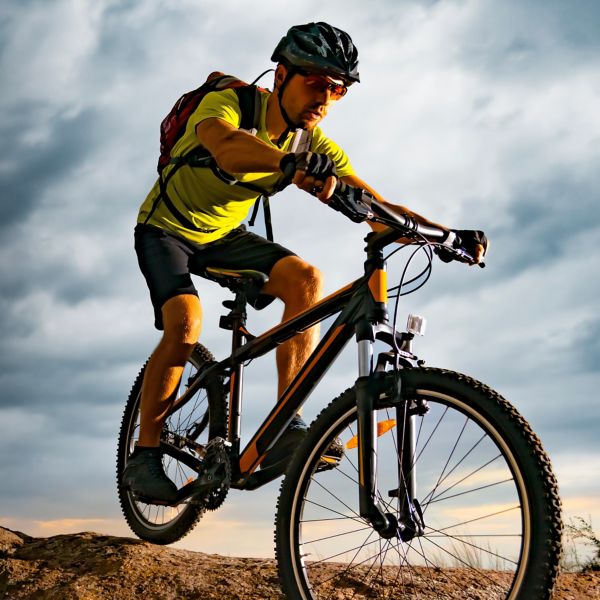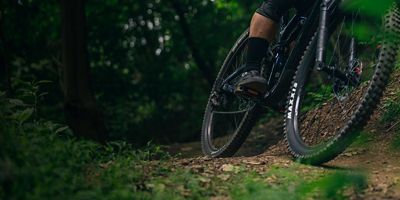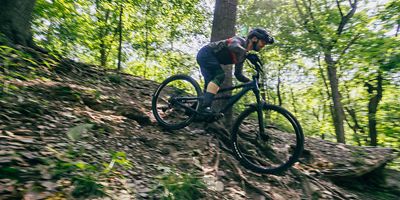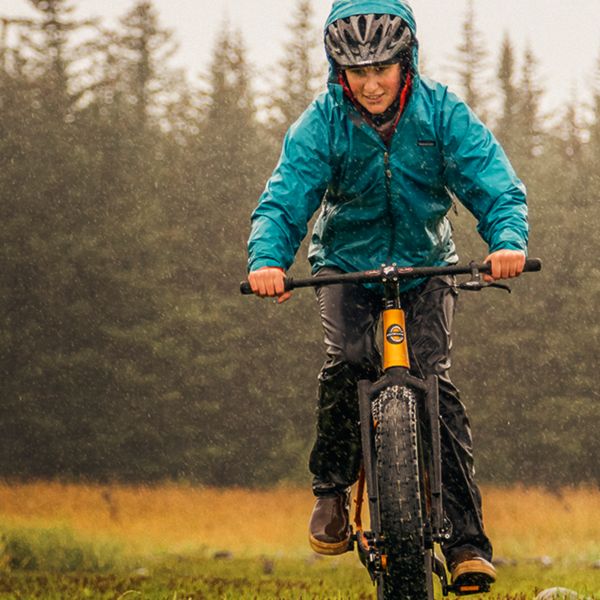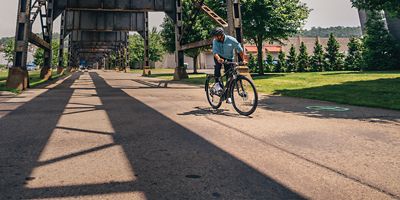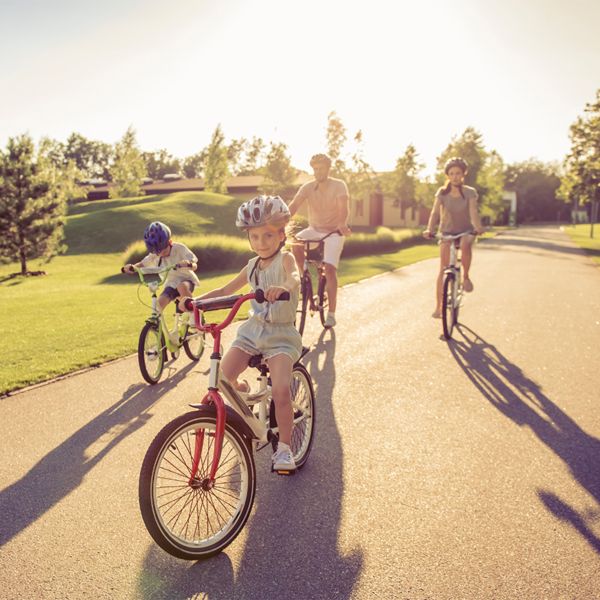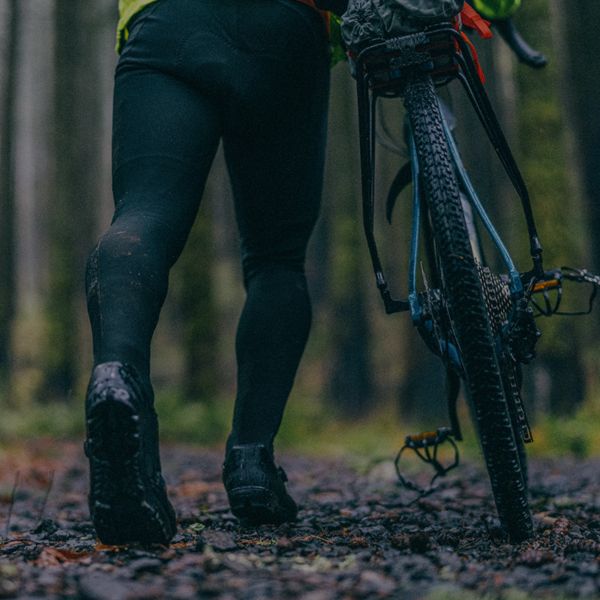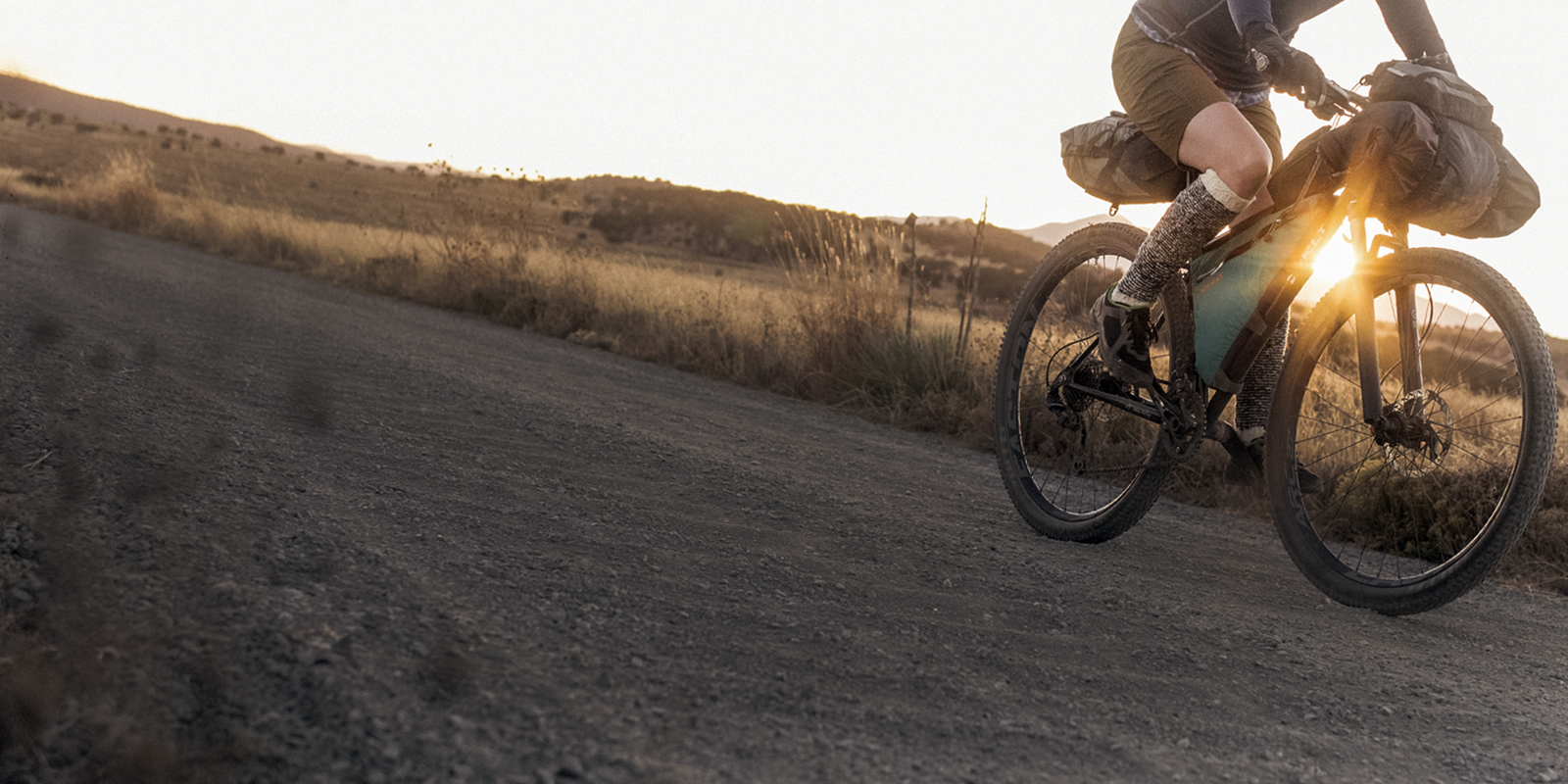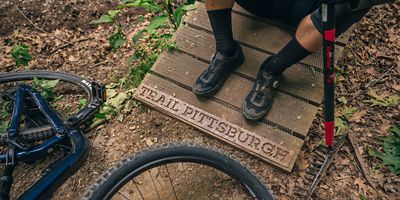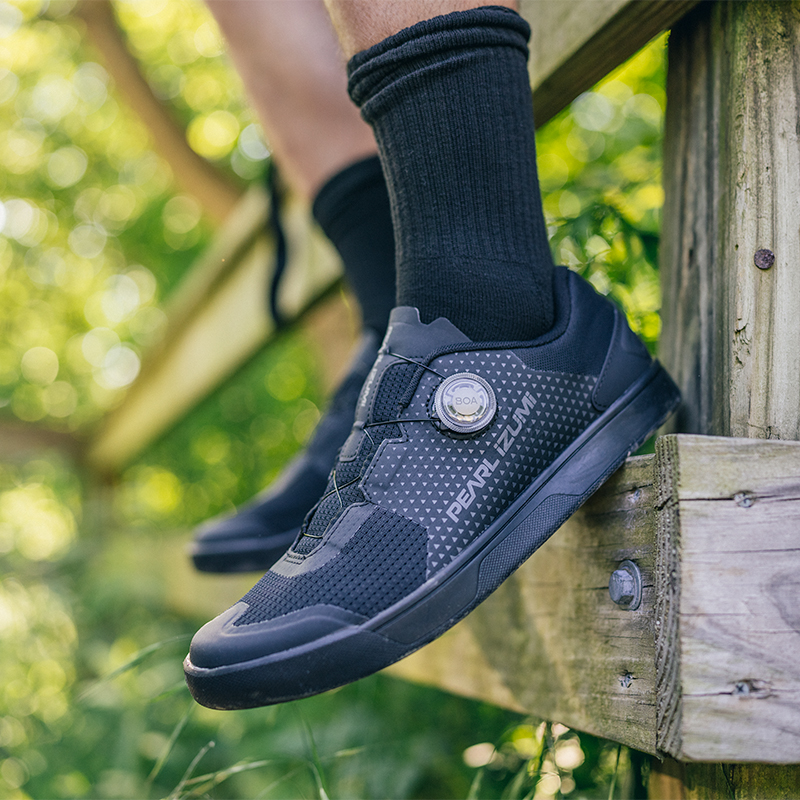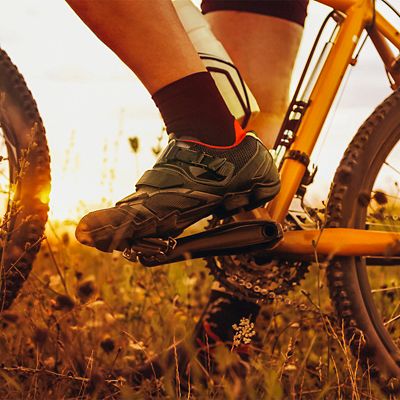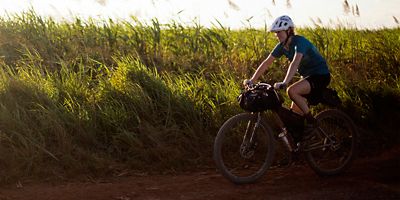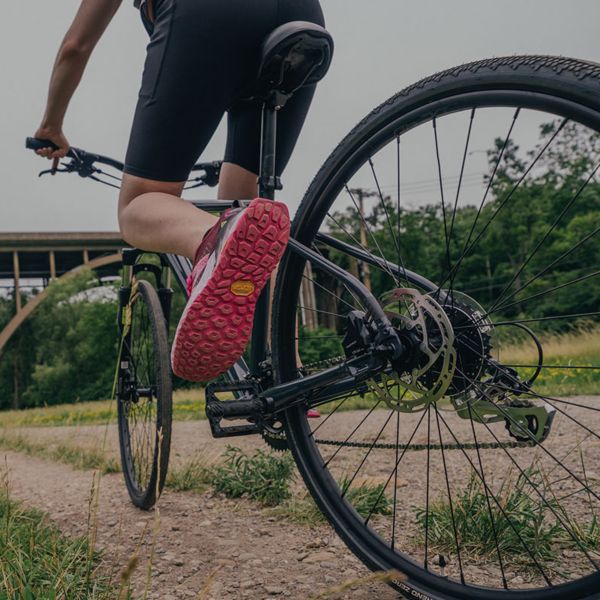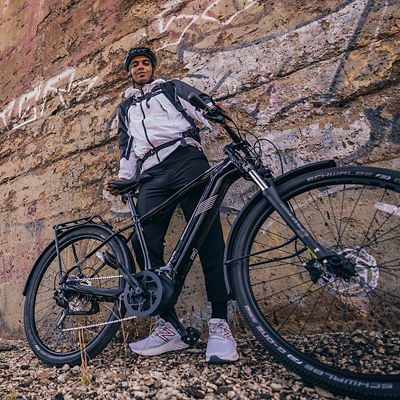
You’ve seen the smiling, mud-caked faces. You’ve heard the “yips” and “woos” echoing through the forest. You know there’s a lot of two-wheeled fun to be had out there, and you’re ready to join the team. And yes, it’s almost “just like riding a bike,” but there are specific skills and strategies you should know that will make your entry into mountain biking more fun, safe, and social. Start with these tips.
Get Equipped
Having the right apparel and gear won’t just make you more comfortable, it will keep you safe.
- Bike: It starts here, of course. Read our guide to choosing a mountain bike to navigate the choices between various bike styles and suspension systems.
- Helmet: First and foremost, buy a good helmet. No shortcuts here. A purpose-made helmet will give you protection designed for the specific dangers of mountain biking. That means more coverage than your typical road biking helmet.
- Shoes: You might use clipless pedals from the start. They connect your shoes to the pedals for better efficiency while climbing and on long rides (they allow you to apply maximum power while pedaling both up and down). If you’re using flat pedals, you still want mountain biking shoes made for the job, as they’ll help you stay on the pedals and stay in control.
- Eyewear: It’s not just for sunshine. You need eye protection to guard against flying dirt, bugs, and rocks. Use clear lenses in low light situations.
- Apparel: Mountain bike clothing is often looser and more casual than road bike clothing, but it’s fine to wear whatever is comfortable. Most important: Use a chamois of some sort. This padded undergarment boosts comfort and reduces chaffing on long rides.
- Hydration pack: Always stay hydrated. Enough said.
Move With Your Bike
Proper riding position will help you corner better, climb better, descend more safely, and have more fun. While road riders may be used to staying in the same position for most of the ride, mountain bikers will want to shift weight and frequently stand up.
For most riding, you want your weight centered over the bottom bracket, where the arms of the pedals attach to the bike frame. Keep your knees and arms slightly bent, to better absorb shocks, and your back straight with your torso bent slightly toward the handlebars. This will allow you to move side to side, stand up, absorb bumps, and adjust your weight to keep your bike on track.
Keep a finger on each brake lever at all times. You don’t want to reach for your brakes when you need them, wasting valuable time.
Braking
Pull your brakes smoothly rather than yanking quickly on them. The goal is to slow down the roll of the tire, not lock it up completely. If you lock up a tire, it’s liable to slide the bike rather than stop it. Instead, apply increasing, consistent pressure to quickly and powerfully slow your bike down.
Your brakes will likely require different amounts of pressure to maximize your braking speed without locking either brake up. While your front brake has more stopping power, it is also likely to pitch you forward, over your handlebars if you’re not careful. To combat this, as you brake, move your weight down and back. For aggressive braking this may mean standing up and pushing your hips and butt back as your chest lowers in order to get maximum braking without flipping over your bars.
Shifting
There is nothing worse than starting up a hill only to realize you are in the wrong gear. After a couple of nearly impossible pedals, you’ll either have to put a foot down or suffer through the sound of a chain popping and jumping over your gears. Both are no fun. Instead, shift early and often. Avoid shifting while pedaling hard; instead, softly pedal as your chain moves between gears. It will keep everything moving smoothly and effectively.

